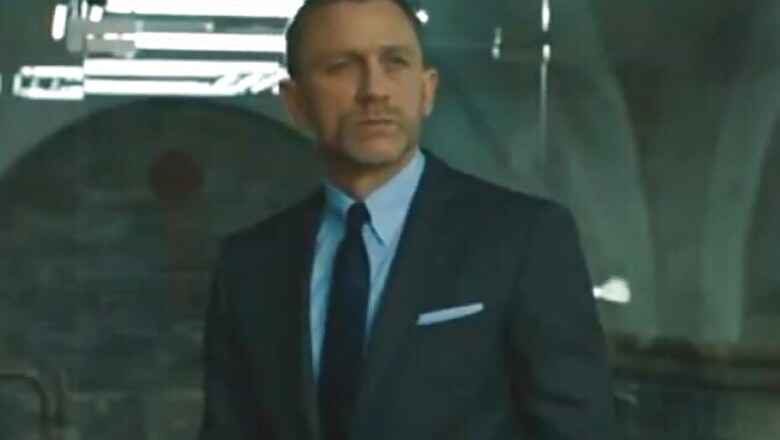
views
Los Angeles: Roger Deakins is the rare person I was actually nervous to interview because I'm such a huge fan of his work. When I talked to the veteran cinematographer in early 2008, after he'd received Academy Award nominations for both 'No Country for Old Men' and 'The Assassination of Jesse James by the Coward Robert Ford,' I found him to be lovely and humble, with a dry and self-effacing British wit - which naturally made me admire him even more.
Now he's shot the most gorgeous James Bond film yet: this week's 'Skyfall', which marks his third collaboration with director Sam Mendes. But he's probably best known as the Coen brothers' usual director of photography, having shot 11 of their films. He's a nine-time Oscar nominee but, in a travesty of justice, he's never won. Maybe 'Skyfall' will change that.
So we're going to get a little nerdy this week and discuss five of the most excellent examples of Deakins' work:
'The Man Who Wasn't There' (2001): One of my favorite films from Joel and Ethan Coen, and one that's underappreciated compared to the better-known 'Fargo' or 'O Brother, Where Art Thou?' Deakins photographed this darkly comic homage to film noir in lushly beautiful, striking black and white. He's said this is his favorite film he's made with the Coens; a longtime still photographer, Deakins lights for light and shade anyway rather than color. The scene in which a hotshot lawyer played by Tony Shalhoub explains Heisenberg's uncertainty principle while walking back and forth beneath rigidly structured beams of light is just breathtaking.
'No Country for Old Men' (2007): This is the Coens' masterpiece, and it allowed Deakins to bring the harshly beautiful, seemingly endless expanse of scrub-brushed West Texas vividly to life. Much of this tale of crime and carnage along the Rio Grande, which won the best-picture Oscar and three others, is marked by a parched, bleak openness. But it's also filled with many memorable, intimate images: a silhouetted reflection on a turned-off television screen, the shadow of a pair of boots in the crack of a hotel doorway, or a set of headlights shining into a crime scene at night.
'The Assassination of Jesse James by the Coward Robert Ford' (2007): Andrew Dominik's film is set during the late 1800s in Missouri, as Jesse James (Brad Pitt) nears the end of his storied criminal career and is shot to death by a member of his gang. Deakins bathes everything with a soft, warm sense of nostalgia and melancholy, which may seem like an unusual choice given the violent subject matter. But the result is disarming and inspired. A nighttime train robbery, for example, becomes an almost romantic ballet of light and shadow.
'Jarhead' (2005): I did not love this movie as a whole but Deakins created some powerfully dramatic visuals here. This was his first collaboration with Mendes (they'd also work together on 2008's 'Revolutionary Road'), based on the true story of Marines who fought in Operation Desert Storm, with Jake Gyllenhaal serving as our guide. As the film descends into its darkest period, Deakins' depiction of a burning oil field is stunning - a bold swirl of orange and black, like some beautiful version of hell. And his shots of the desert, usually through an eye-level, hand-held camera, make the dry vastness and shimmering sun feel palpable.
'A Serious Man' (2009): Not exactly the Coens' best-known movie (although it earned Oscar nominations for best picture and original screenplay) and not even the showiest example of what Deakins can do. That would probably be "The Big Lebowski." But the look of this film is so lovely and dreamlike, it draws you in. It's inspired by the brothers' youth in a predominantly Jewish suburb of Minneapolis in 1967, so it's very specific in terms of costumes, music and production design. But Deakins' often surreal cinematography adds to the off-kilter mood as we trudge along with the put-upon Michael Stuhlbarg. See it for the "goy's teeth" scene alone.


















Comments
0 comment